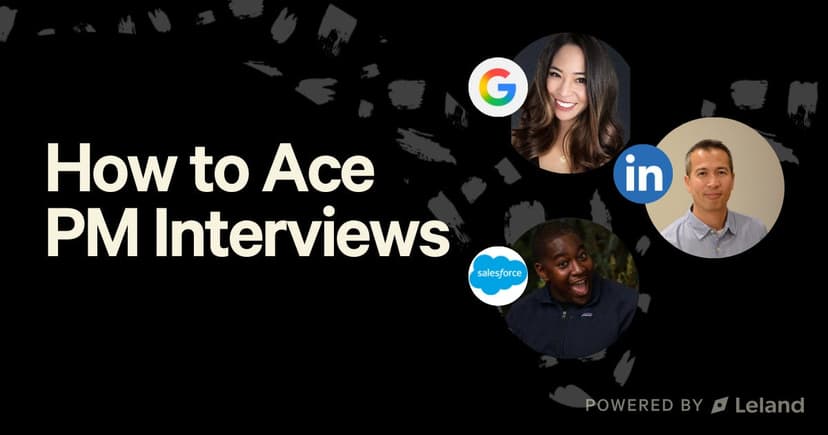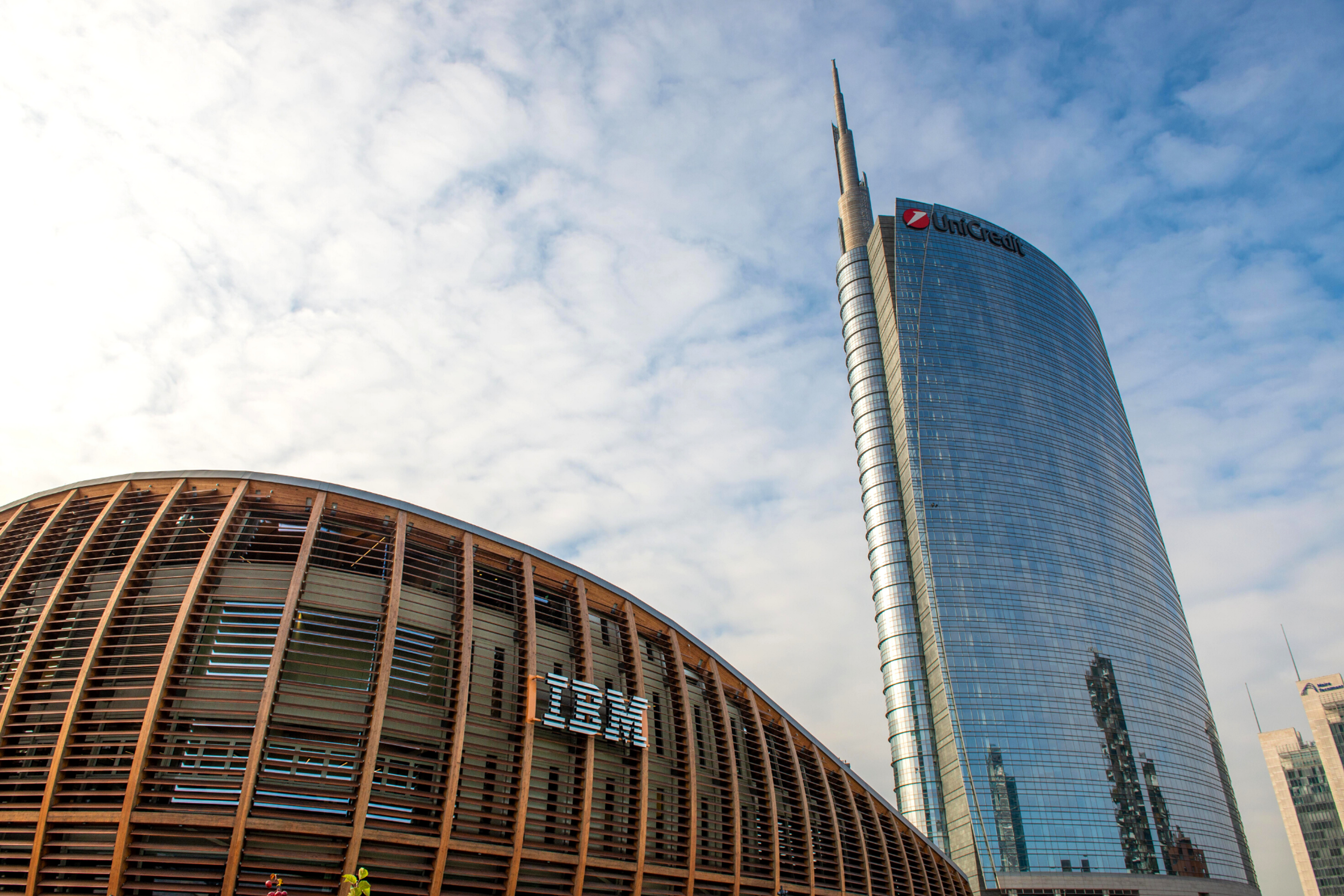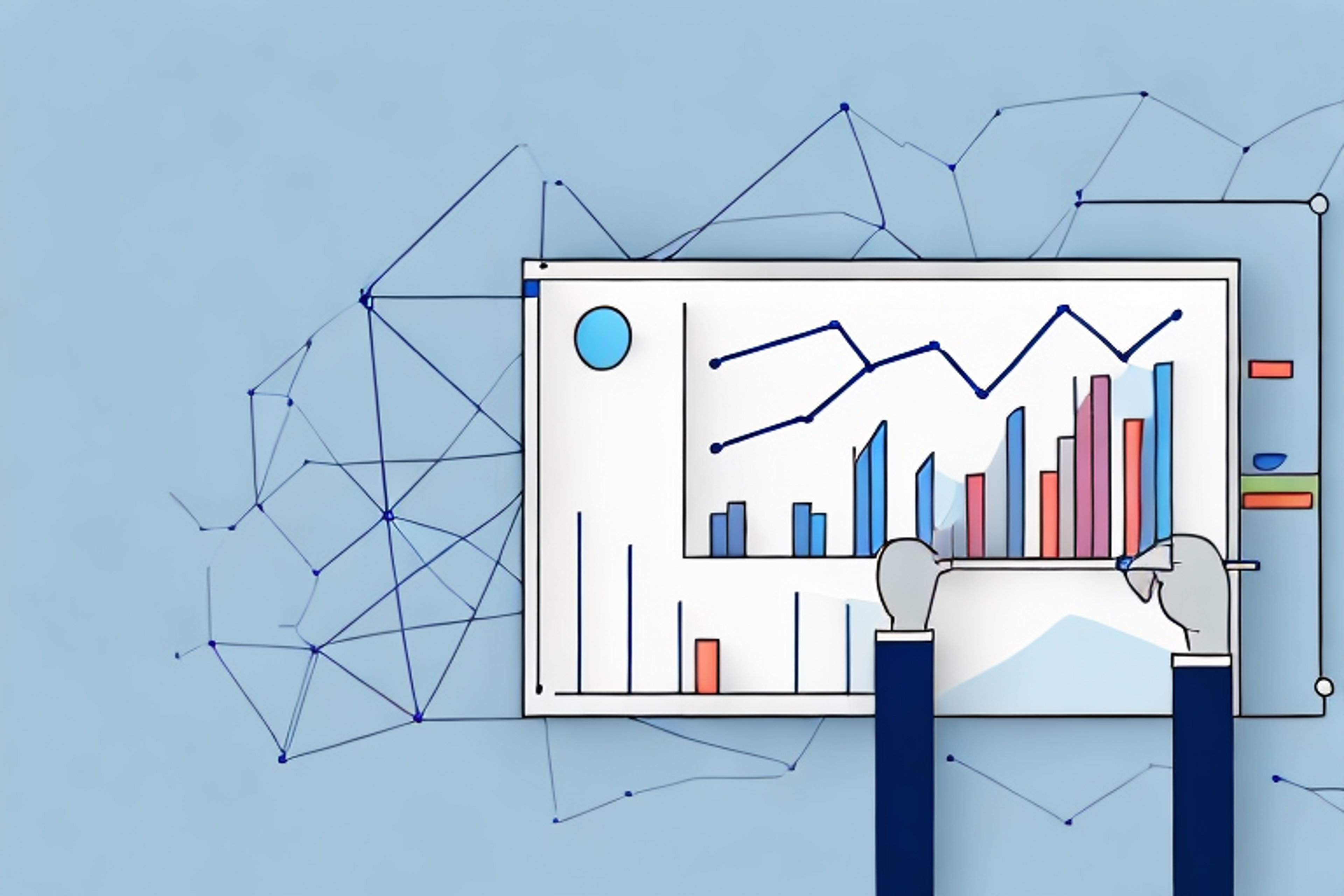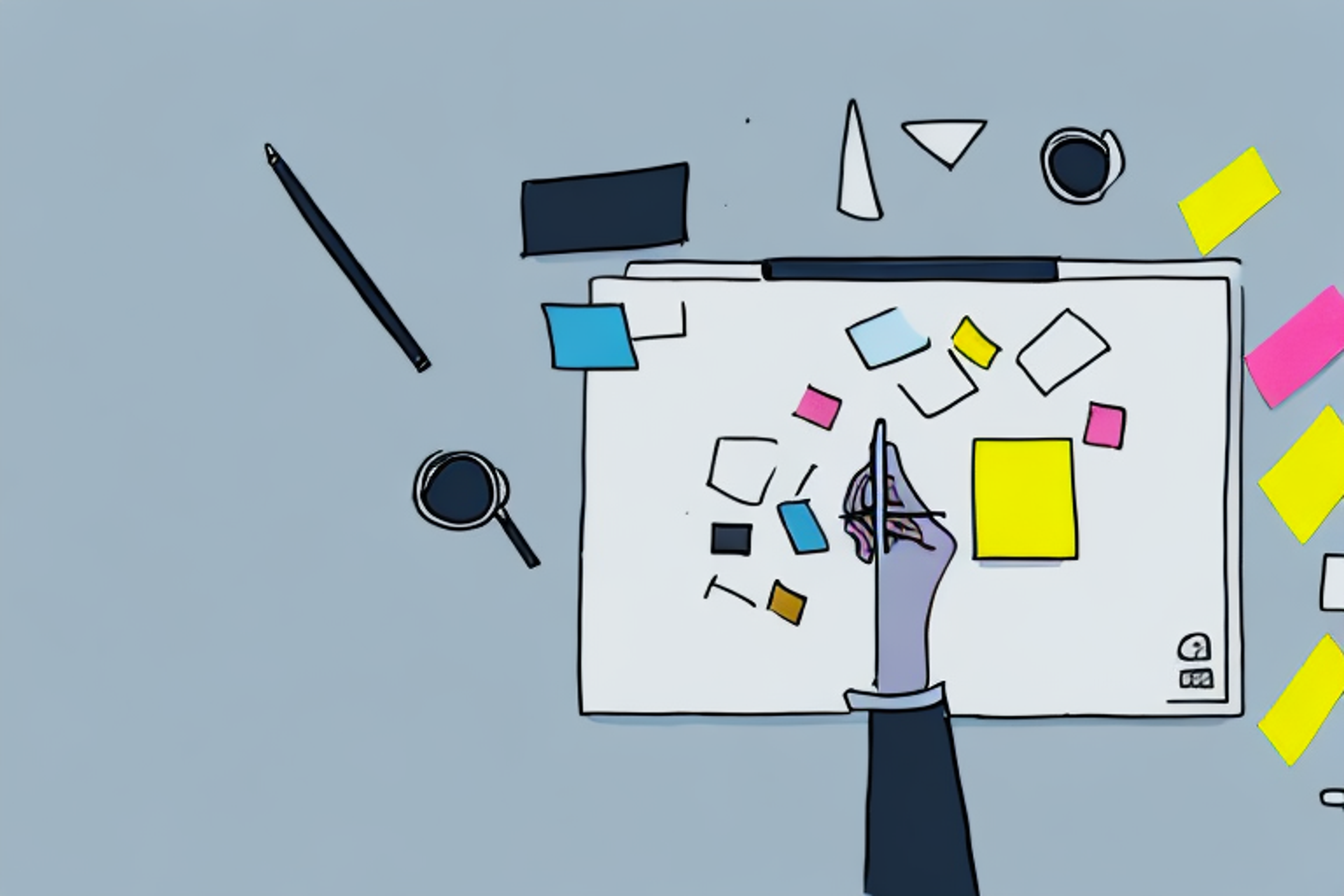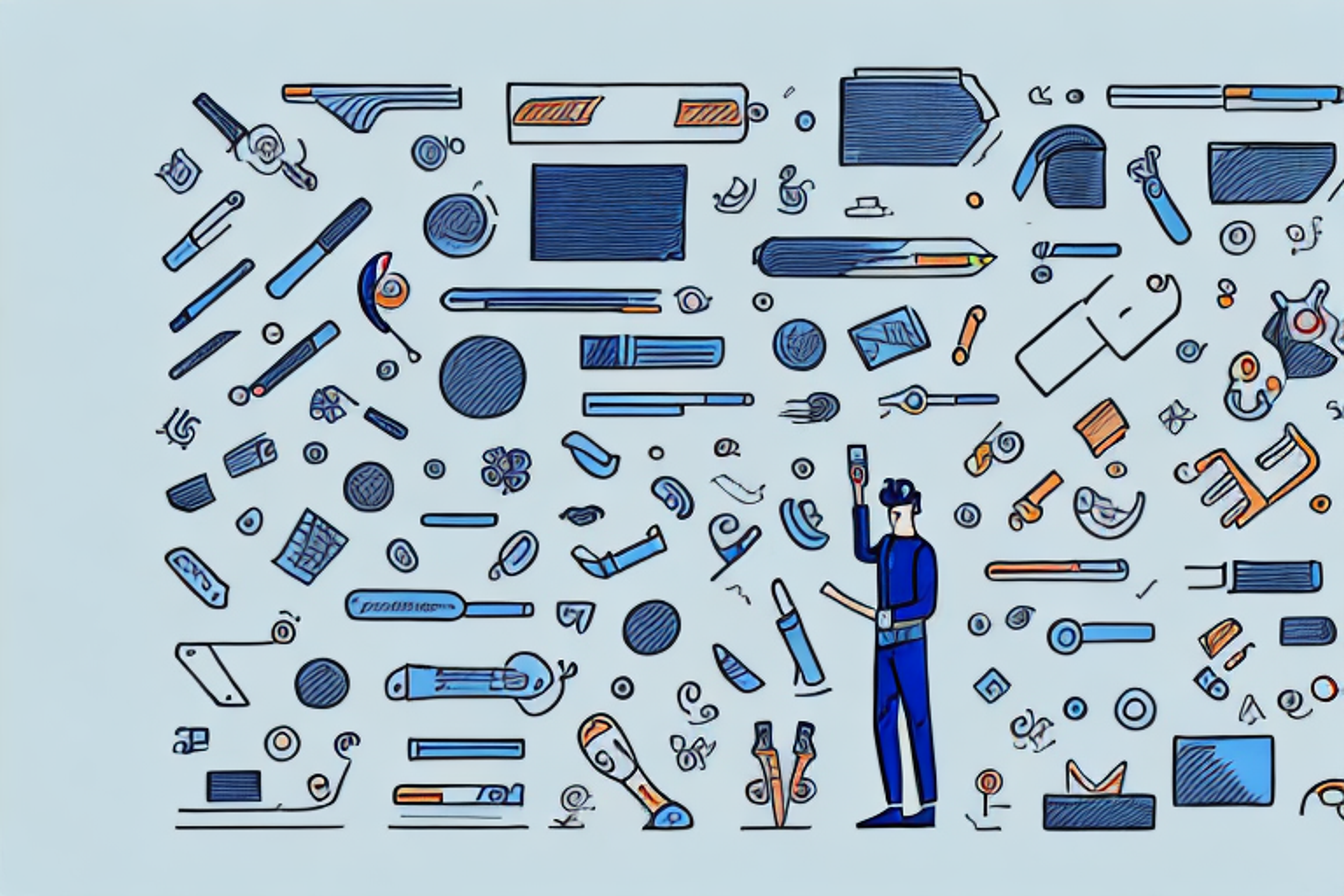How to Get Into the Uber APM Program (2026)
Read the ultimate guide to the Uber APM program, including an overview of the application, sample questions, free resources, tips, and coach recommendations.
Posted September 23, 2025

Join a free event
Learn from top coaches and industry experts in live, interactive sessions you can join for free.
Table of Contents
As a global technology company, Uber developed the Uber Associate Product Manager program (APM Program) to empower aspiring product managers and recent college graduates. The program consists of structured ongoing training, exposure to multiple teams, and collaboration with senior product leaders. It’s part of Uber’s broader global transformation program that helps shape the next generation of future product managers in constantly evolving technology spaces.
Uber APM Program Deadlines (2026)
The 2026 Uber APM program just opened up. Applications are due on Friday, September 26 at 5pm PT (8pm ET). Submit your application here.
To be eligible for this year's cohort, you need to be:
- Currently enrolled in a bachelor's or master's degree program in Computer Science or an equivalent technical field
- Graduating between December 2025 and July 2026
- Available for employment in August 2026
What is the Uber APM Program?
The Uber Associate Product Manager (APM Program) is a two-year rotational program that enables recent college graduates to gain hands-on experience in the product management field. Throughout the duration of the program, APMs collaborate across Engineering, Design, Data Science, and Operations to deliver impactful end-to-end solutions. Through this, they cultivate lasting connections within the APM community, including many highly-touted PMs who have been behind Uber’s success. They also benefit from insights from industry and product experts within and beyond the program to advance their professional journey. Uber’s APM program follows a unique roadmap:
Bootcamp
During your first 2 weeks at Uber, you will enter a bootcamp that is designed to catch you up to speed on everything Uber. Here, you will learn about all areas of the business, develop product fundamentals, exercise customer empathy, and embrace learn-by-doing via a Hackathon.
Note: The bootcamp helps you develop product fundamentals, gain hands-on experience, and exercise customer empathy. You’ll train in product strategy, communication skills, and soft skills, all while collaborating with cross-functional teams and participating in real-time sprints that simulate actual launches.
Rotations
Following the bootcamp, you emerge as an up-and-coming expert on Uber, prepared to embark on your initial assignment. Once paired, you seamlessly integrate into a team and begin your work duties. During your first rotation as an APM, you collaborate alongside a seasoned PM who offers dynamic guidance and mentorship; as you progress through subsequent rotations, you progressively assume greater roles within the diverse departments you may opt to engage with.
On its most recent job post, Uber states that, "Previous APMs have launched busses on the Uber app, led our new membership program, and built rides products to improve access to healthcare."
World Trip
Uber doesn’t let your time in the program go without a bit of fun! After completing an initial rotation, you join fellow APM cohort members for a global journey to four of Uber's most prominent cities. This trip offers your APM cohort an opportunity to foster an understanding of global market demands, employing this international product outlook to influence decisions on future product focuses and prospects. This experience allows you to better understand global transformation and adapt product marketing strategies to international markets. It’s an immersive way to grow into leadership, develop an eye for innovative solutions, and experience how a powerful technology company builds products across cultures.
Note: APMs will join a total of 3 teams throughout the program, including but not limited to Rider, Driver, Merchant, Courier, New Verticals, Uber Freight, and Platforms, ultimately leading to a Product Manager role
Why Choose the Uber APM Program Over Other APMs?
Unlike traditional product management internships or even well-known RPM programs like Meta or Google, the Uber APM experience offers real-world exposure to both tech and operations. This unique model supports entry-level product manager growth through diverse rotations, international travel, and mentorship from experienced product managers. With access to a world-class product team, you’ll work in an innovative environment solving an entirely new class of problems, ranging from autonomous vehicles to pricing ecosystem innovation.
What You’ll Do
From the most recent job posts, Uber lists the various responsibilities of its APMs which include the following:
- Internalize and deeply understand Uber's mission and strategies, as well as the mission and objectives of your specific team
- Distill vision and strategy for your cross-functional team to set qualitative objectives and quantitative goals
- Drive innovation, definition, roadmap, and design of entirely new Uber products and product features to deliver against team and company goals
- Challenge all members of cross-functional teams (engineering, design, data science, operations, etc.) to think passionately and creatively and funnel that energy into concrete products and execution plans
- Use data to influence product direction, in the form of rider / eater behavior- or other business metrics
- Solicit and welcome constructive feedback
- Supervise and measure product launches, then incorporate takeaways back into the product development process
- Clearly communicate product plans, benefits and results to a spectrum of audiences, including internal partners, Uber employees, and the various types of users of the Uber platform (riders, drivers, couriers, restaurants, etc)
Uber APM Program Application Overview
The Uber Associate Product Manager (APM) Program is one of the most competitive emerging talent programs in tech. Although the application cycle usually begins in the fall each year, we’ll update this page as soon as the next cohort opens. For now, here’s what you need to know to start preparing early.
Basic Qualifications
To be eligible, applicants must be enrolled in a bachelor’s or master’s degree program in Computer Science or a similar technical field. You should be ready to start full-time employment by August 2026. While a CS degree isn’t required, Uber strongly values candidates who bring a foundation in data science, engineering, or business analytics.
What Uber Looks for in an APM
Uber is seeking aspiring product managers who have a deep passion for building impactful products, not just features. Top candidates often come from diverse academic and professional backgrounds, but they share several traits:
- Analytical and data-driven decision making: You’re comfortable gathering and interpreting data to prioritize product work without overthinking.
- Design sensibility: A strong appreciation for intuitive, user-centered product experiences.
- Action-oriented mindset: Uber values candidates with a “driver” personality—those who take initiative, communicate clearly, and push projects forward.
- Collaboration and partnership skills: Because this is a highly cross-functional role, you'll work closely with engineering teams, cross-functional teams, and stakeholders across the Uber platform.
- Commitment to growth: Uber looks for future product managers with a demonstrated history of learning, iterating, and striving for impact in a constantly evolving technology space.
Note: In short, Uber is looking for entry-level product managers who are curious, collaborative, and ready to grow into product leaders within a powerful technology company.
Uber APM Application Tips
1. Polish your resume.
The APM program at Uber is extremely competitive. Most applicants who submit their resumes will not get an interview. The best way to try and get one is to have a great resume. Make your bullet points specific to what you did (that is, not a group), quantify your impact, and avoid filler or vague words.
Verify that every bullet point is relevant to the job you’re applying for and tie them into the role’s responsibilities. Many PMs also choose to include a “Projects” section on their resumes in which they can fill potential gaps, highlight work done outside of a day job, and include any certifications/courses completed.
For more resume advice, read An Expert’s Guide to Resumes: Five Tips to Make You Stand Out.
2. Be ready to answer “Why PM?” and “Why Uber?”
These are fundamental questions that will impact whether the recruiter sees you as eligible to continue the interview process. While you don’t need to have technical experience, you do need to be able to articulate your interest in technical disciplines. When answering the “Why Uber?” question, be specific. Don’t just talk about how big Uber is. What specific teams and/or products are you interested in? Why Uber compared to other major PM programs?
3. When answering questions about products and product features during interviews, talk about tradeoffs.
Almost every aspect of product management includes discussions of tradeoffs. How will releasing one feature affect others? What should the engineering team prioritize? Bringing up tradeoffs in interviews shows the interviewers that you are thinking logically about the real implications of PM decisions. It will also show that your recommendations can be trusted because you have thought out the pros and cons.
4. Don’t try to analyze every potential aspect of a problem/question. Show that you understand the question through a north-star goal and then define any relevant metrics.
Your time during interviews is limited, and it’s important that you’re getting to the point and covering all the bases. When asked a question about a product, explain the overarching goal as well as what metrics you would need to measure to reach that goal. If the interviewer pushes back, explain your assumptions and reasoning.
With that being said, don’t overwhelm the interviewer with every potential metric that could be relevant. Keep it narrowed to the most important ones and include justifications for why you chose them. What will actually drive success? What user behaviors are you looking to encourage?
5. Use a framework and think about the user experience.
Using a framework to structure the problem will show the interviewer that you approach problems methodically and are organized in your thinking. This includes talking about prioritization. If you’re discussing the implementation of a new feature, talk about the pros and cons of different solutions and what would need to be prioritized for each approach to work.
The user experience is the core of product management. Consistently factoring it in, through identifying desired user behavior and target user segments, demonstrates that you recognize the importance of the user in every product decision.
Read: Moving Beyond Frameworks: The Secret to Excelling in Product Management Interviews
6. Get your resume reviewed by an expert and do a mock interview beforehand
Having somebody review your materials who knows what the hiring committees are looking for can be a game changer for your applications. Here are former Uber PMs and APMs who can help you navigate your Uber-specific interviews:
- Daniel - Former Uber APM / PM; Offers at Indeed, Dropbox, and Meta; Founder + CEO
- Britton - Product Lead at Uber, Ex-AmEx & Accenture, 14+ Years of Product Experience
- Ahmad - Former Lead PM at Uber, Ex-Postmates & Lyft, Current Head of Product
"Working with Daniel for PM interview prep was a fantastic experience! What really stood out was his ability to identify my blind spots and offer perspectives I hadn't considered, helping me think through my responses in new ways. He’s a natural storyteller, and his guidance was invaluable in helping me craft compelling narratives for my behavioral interviews and helped me land an offer at Uber!"
- Coached by Daniel M. | Admitted to Uber's APM Program
50+ Sample Uber Product Management Interview Questions
Uber-specific Questions
Product Sense
- How would you tailor Uber’s product to meet the needs of users in a new international market with unique transportation challenges?
- How would you design the app interface and user journey to accommodate multiple transportation modes like ride-sharing, e-scooters, and public transit?
- What innovative features or strategies would you propose to enhance passenger and driver safety within the Uber app and during rides?
- How would you design features or incentives to improve driver engagement, loyalty, and satisfaction with the Uber platform?
- If expanding Uber Eats into a new category, how would you prioritize features and the user experience for this venture?
- What challenges and benefits would a subscription-based model offer Uber, and how would you introduce and market it?
- How would you approach integrating self-driving cars into Uber's fleet, considering user experience, safety, and regulatory compliance?
- Suggest product features or initiatives that promote eco-friendly transportation options and contribute to Uber's environmental sustainability goals.
- How would you ensure Uber's product compliance with diverse global regulations while maintaining a consistent user-friendly experience?
- In a highly competitive market, how would you foster innovation and continuously improve Uber's products to retain and attract users?
Execution
- How would you approach the execution strategy for Uber Eats' expansion into a new international market?
- Explain the execution steps and considerations for integrating a third-party navigation app into Uber's driver app.
- Detail an execution strategy for integrating electric vehicles (EVs) into Uber's fleet for reduced carbon emissions.
- How would you execute the launch of Uber's micro-mobility services (e.g., scooters, bikes) in a new city, considering regulatory challenges and user adoption?
- How would you develop an execution plan to streamline the onboarding process for new Uber drivers, reducing time-to-earnings?
Leadership & Drive
- How do you resolve conflicts instead of avoiding or ignoring them?
- How have you solved a challenge, whether or not it was technically your problem?
- Can you adjust your leadership style to specific situations and people? Are you able to encourage collaboration and reconcile differences among opposing opinions?
- Do you know what your weaknesses are? Are you willing to learn and grow?
- Are you able to stick to things long-term?
Other Example Questions
- Uber has a diverse range of services (UberX, UberEats, Uber Freight, etc.). How would you approach managing products across such a wide portfolio?
- Uber operates in various global markets with unique regulations and cultural differences. How do you adapt your product strategy to cater to different regions?
- Can you suggest improvements to Uber's rider or driver experience based on your understanding of the platform?
- Uber is known for its dynamic pricing model (surge pricing). How would you balance user satisfaction and revenue generation in this context?
- Uber's platform involves real-time interactions between riders and drivers. How do you ensure a seamless experience even during times of high demand and surge pricing?
- Uber has been investing in autonomous vehicles. How would you develop a product roadmap for this emerging technology?
- How do you think Uber can differentiate itself from its competitors in the ride-sharing and food-delivery industries?
- Uber has experimented with new services like Uber Elevate (urban aerial mobility). How would you assess the feasibility of such innovative products?
- Can you provide examples of how Uber could leverage partnerships or integrations with other tech companies to enhance its services?
- Uber's growth has led to concerns about its environmental impact. How would you address sustainability and environmental considerations in your product strategy?
- Uber collects a vast amount of data. How would you use data-driven insights to make informed product decisions?
- Uber has experimented with different subscription models and loyalty programs. How would you design and iterate on such programs to enhance user engagement and retention?
- Imagine you're in charge of launching a new category of Uber services. How would you approach defining the minimum viable product (MVP) and iterating on it based on user feedback?
- Can you walk us through your experience with product management and how you've contributed to successful product launches?
- What is the most challenging product problem you've faced, and how did you approach solving it?
- How do you prioritize features or improvements when working on a product with limited resources?
- Can you explain the Agile methodology and how you've applied it in your previous roles?
- What metrics do you consider when evaluating the success of a product, and how do you ensure they align with business goals?
- Describe a situation where you had to make a tough decision that balanced user needs and business requirements.
- How do you gather and incorporate customer feedback into your product development process?
- Can you discuss a time when you had to pivot a product strategy due to market changes or unexpected challenges?
- In your opinion, what are the most important traits for success as a PM?
- Choose a target audience that you don’t think is well-served by Uber. How would you redesign Uber to better appeal to and serve that user?
- Tell me about a time you made a decision that wasn’t popular. How did you implement it?
- Walk us through a product that you successfully took from ideation to launch. What were the key milestones and decisions you made along the way?
- How do you approach defining the target market and user personas for a new product?
- How do you handle situations where there's a gap between customer expectations and the technical feasibility of a feature?
- Product roadmaps need to balance short-term goals with long-term vision. How do you ensure that your roadmap aligns with both immediate needs and strategic objectives?
- When have you had to convince someone on your team of an idea you had?
- What is your favorite website? Why?
Other Resources to Break Into Product Management
Uber-specific
- The Product Podcast – How to Break Into Product Management by Uber Sr PM
- Product School – How to Get a Management Job at Uber by Product Manager at Uber
- Product School – Uber PM Talks: How to Crack the PM Interview
PM Guides
- Aha! – Product Management Guide
- Udacity – Product Design by Google
- Infinity – Practical Product Management Framework
- Jeff Whitlock – The Beginner’s Guide to Product Management
- Product School – The Ultimate Product Management Guide
- Product Life – The Associate Product Manager Playbook
Other
- Roadmunk – 10+ Free Customizable Product Roadmap Templates
- UpGrad – How to Crack the PM Interview
The Bottom Line
The Uber Associate Product Manager (APM) program stands out as one of the most immersive and prestigious emerging talent programs for aspiring product managers. Through hands-on rotations, global exposure, and direct mentorship from senior product leaders, APMs gain the product management skills, technical background, and business strategy mindset needed to launch a successful career in a powerful technology company. Whether you’re a recent college graduate or someone seeking to break into product, this program offers the structure, challenge, and opportunity to grow into a true product leader. If you’re ready to work with a world-class product team and contribute to impactful projects across the Uber platform, there’s no better place to start than here.
Where Can I Start?
Product management is becoming an increasingly competitive industry and the application process can be difficult to go through alone. For personalized advice and guidance, work one-on-one with an expert Leland PM coach. They have experience at top companies and can help with any part of the application, recruiting, and hiring processes. A few of our top recommendations are below, and you can see our full list of world-class PM coaches here.
Here are some of our additional PM resources to help you navigate the job hunt and recruiting journey.
- The 25 Best Entry-Level APM Programs
- Tips from an Expert: How to Prepare for Your Product Management Interview
- 20+ Free Product Management Resources
- How to Get Into the Google APM Program
- How to Get Into the Facebook/Meta RPM Program
- How to Get Into the IBM Associate Product Manager (APM) Program
- How to Get Into the Yahoo APM Program
- How to Get Into the Lyft APM Program
- How to Get Into the Salesforce APM Program
FAQs About Uber APM Program
What is the Uber APM program, and who is it for?
- The Uber Associate Product Manager (APM) program is a two-year emerging talent program designed for recent college graduates and aspiring product managers. It provides hands-on experience through rotations across multiple product teams, mentorship from senior product leaders, and exposure to real-world challenges in a global technology company.
Does Uber require a computer science degree for the APM program?
- While a computer science or technical background is preferred, it’s not required. Uber encourages applicants with strong problem-solving skills, an interest in data science, and a demonstrated passion for product management to apply, regardless of major.
What kind of projects do Uber APMs work on?
- APMs work on diverse projects ranging from launching innovative solutions to improving existing core products like Uber Eats, Uber Freight, and Express Pool. You’ll collaborate with engineering teams, contribute to product strategy, and make data-driven decisions that shape the future of the Uber platform.
How competitive is the Uber APM program?
- The Uber APM program is highly competitive, accepting a small number of candidates from thousands of applicants. Successful candidates typically show strong communication skills, technical skills, a passion for business strategy, and a history of gaining exposure through product management internships, side projects, or leadership experiences.
What happens after completing the Uber APM program?
- After completing the program, most APMs are promoted to product managers at Uber. They go on to lead projects, drive product roadmaps, and continue to grow within a world-class product team. Many alumni have moved into leadership positions across top tech companies.
What types of teams will I get to work on?
- As an APM, you’ll have the chance to work on multiple teams across the Uber platform. Past projects include launching Uber for Business, building the Uber Eats marketplace and its pricing ecosystem, enhancing Express Pool, developing real-time face verification to prevent account hacking, rolling out upfront pricing, and launching suggested pickup locations.
Browse hundreds of expert coaches
Leland coaches have helped thousands of people achieve their goals. A dedicated mentor can make all the difference.




